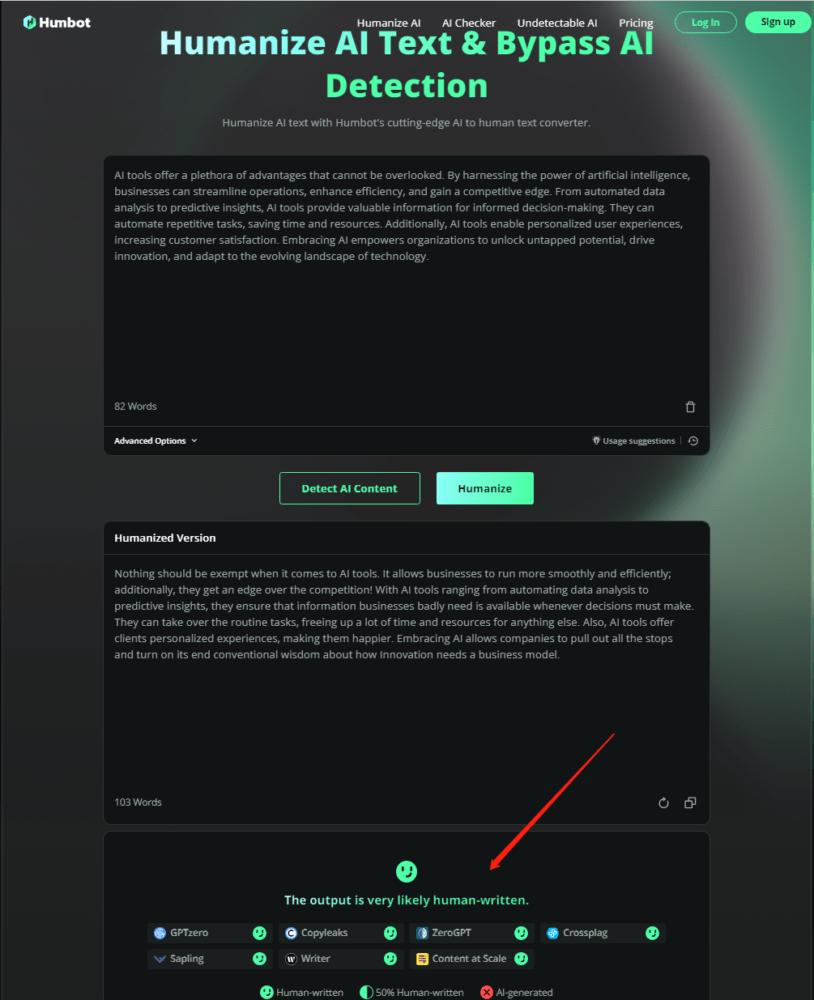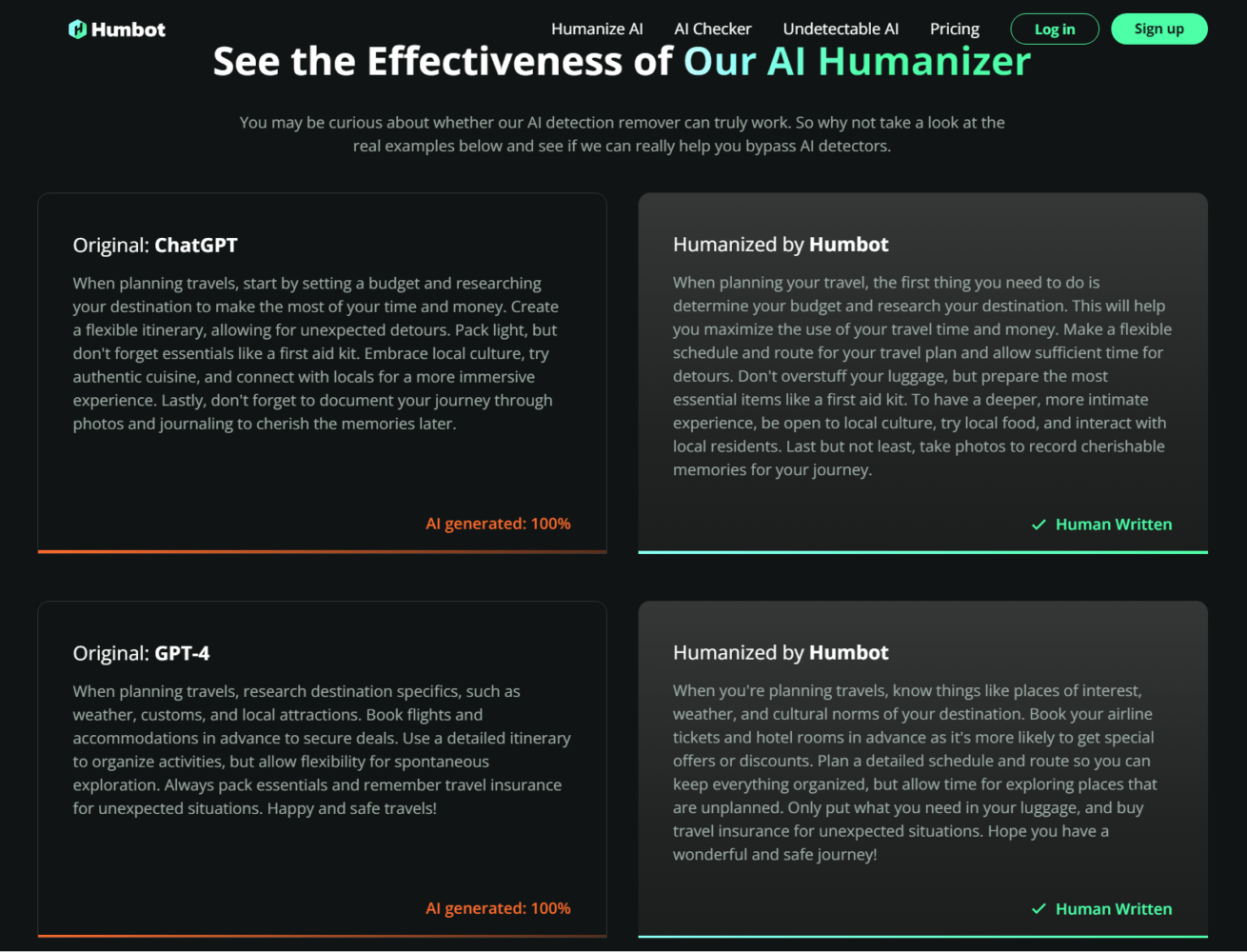In an age where artificial intelligence (AI) plays a pivotal role in generating content across various platforms, the need to maintain originality and human touch in writing has become more pronounced. As AI detectors become increasingly sophisticated, distinguishing between human-written and AI-generated content is now a pressing concern for many content creators, educators, and digital marketers. This evolution has led to the development of tools designed to bypass AI detection, among which a notable mention is the AI humanizer—a software engineered to rewrite AI-generated text in a manner that mirrors human writing styles closely.

Understanding the Role of AI Detectors and Humanizers
The Advancement of AI Detection Tools
AI detectors, or AI checkers, are algorithms trained to identify content generated by artificial intelligence. These tools analyze the structure, pattern, and phrasing of text to detect telltale signs of AI authorship. As content generation tools become more accessible, the use of AI checkers by academic institutions, publication editors, and website managers has seen a significant uptick. The primary purpose is to ensure content originality and prevent the proliferation of undiscerning AI-generated content, which might lack the nuanced understanding or ethical considerations of human-written text.
The Emergence of AI Humanizers
To navigate the landscape of AI detection, AI humanizers have been developed as a countermeasure. These tools specifically aim to alter AI-generated text to make it undetectable by AI detectors. By modifying sentence structures, employing variability in vocabulary, and injecting stylistic nuances that mimic human idiosyncrasies, AI humanizers can effectively transform the text.
One such tool standing out in this domain is Humbot, designed to refine AI-generated content adeptly (Please note that using systems like Humbot to intentionally circumvent plagiarism checks or misrepresent AI-generated text as human work is ethically dubious and should be approached with caution and integrity).
How AI Humanizers Work: A Closer Look
AI humanizers operate on advanced algorithms that assess the content for detectable AI fingerprints and then apply a series of modifications to obscure these markers. This process involves a deep analysis of the text structure, vocabulary density, and syntax peculiarities—elements that anti-AI detectors scrutinize.

Key Functions of AI Humanizers
- Vocabulary Enhancement: Substituting common AI-selected words with alternatives less frequently used by AI models.
- Sentence Structure Alteration: Adjusting sentence lengths, varying sentence beginnings, and modifying the overall structure to resemble human variability.
- Contextual Nuancing: Incorporating idiomatic expressions, metaphors, or cultural references that AI typically struggles to apply correctly.
- Syntax Variation: Introducing complex syntactic elements that are less likely to be generated by AI, such as conditional clauses or subjunctive moods.
These adjustments not only help bypass AI detector scrutiny but also enhance the text’s overall quality, making it appear more natural and engaging to the reader.
The Case for Using AI Humanizers Responsibly
While AI humanizers offer a sophisticated means to bypass AI detection, it’s crucial to discuss the implications of their use. Ethics in AI-generated content revolves around transparency and integrity. Using such tools to deceive or bypass academic, journalistic, or publishing standards poses significant ethical dilemmas. Therefore, the ideal use of AI humanizers should be aligned with enhancing the readability and engagement of AI-generated content, rather than disguising its origins unethically.
The Benefits of Humanizing AI Text
Despite the ethical caveats, the process of humanizing AI text comes with a host of advantages when used judiciously:
- Enhanced Readability: Humanized text is inherently more relatable and engaging, providing a better user experience.
- Improved SEO Performance: Content discerned as original and human-written is favorably ranked by search engines, driving higher organic traffic.
- Increased Engagement: Humanized content, by appearing more authentic, can foster greater trust and interaction from the audience.
Potential Applications across Industries
- Educational Content: Enhancing AI-generated study materials to be more engaging and understandable for students.
- Digital Marketing: Creating SEO-friendly, original content that resonates with the target audience on a human level.
- Academic Research: Refining AI-assisted academic writing to ensure it meets the stringent originality requirements of scholarly publications.
Future Directions and Considerations
As AI continues to evolve, so too will the methods for detecting and humanizing AI-generated content. The arms race between AI detectors and humanizers poses a continual challenge for developers, ethicists, and users alike. The future of content creation lies in striking a balance between leveraging AI’s capabilities and maintaining the integrity and originality of human touch in writing.
In conclusion, tools like Humbot present a fascinating advancement in the world of AI-written content. They enable users to harness the efficiency of AI while ensuring the final output retains the nuances and quality of human authorship. However, the key to their effective and ethical application lies in transparency, responsible use, and a steadfast commitment to upholding standards of originality and authenticity in digital content creation.
⸻ Author Bio ⸻

Umar Attique Shah is a Pakistani-American entrepreneur, SEO specialist & content Writer. With over 4 years of exceptional experience in marketing content strategies, I have consistently demonstrated my expertise and accomplishments in the field. My experience in writing digital marketing on strategy development, AI, Technology, social media marketing, content creation, SEO optimization, email marketing, PPC campaigns, analytics, and website management.












